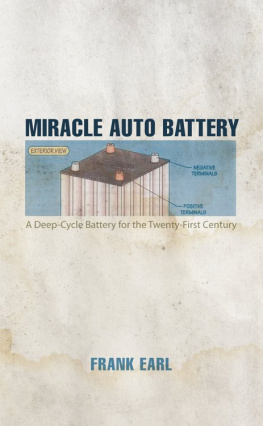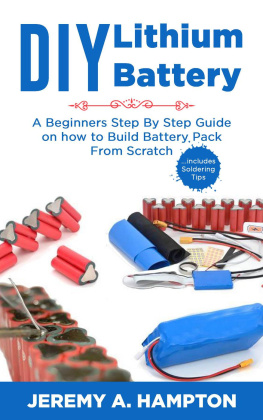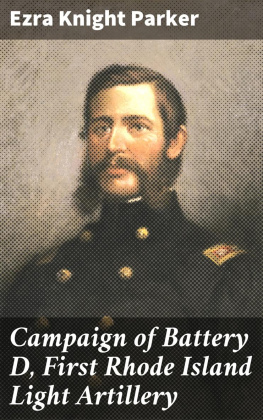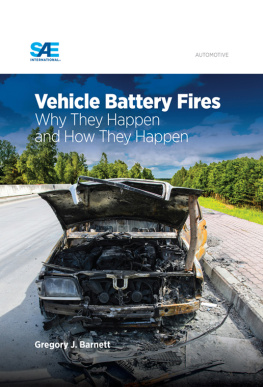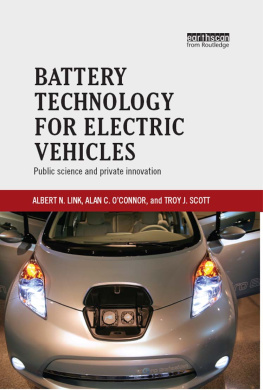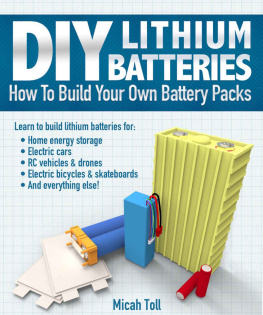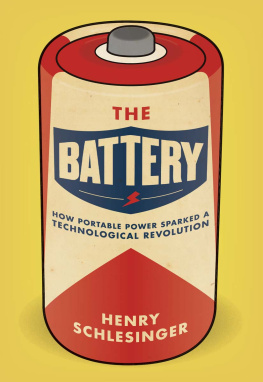MIRACLE AUTO
BATTERY
A DEEP-CYCLE BATTERY
FOR THE TWENTY-FIRST
CENTURY
FRANK EARL
IUNIVERSE, INC.
BLOOMINGTON
Miracle Auto Battery
A Deep-Cycle Battery for the Twenty-First Century
Copyright 2011 by Frank Earl
All rights reserved. No part of this book may be used or reproduced by any means, graphic, electronic, or mechanical, including photocopying, recording, taping or by any information storage retrieval system without the written permission of the publisher except in the case of brief quotations embodied in critical articles and reviews.
The views expressed in this work are solely those of the author and do not necessarily reflect the views of the publisher, and the publisher hereby disclaims any responsibility for them.
iUniverse books may be ordered through booksellers or by contacting:
iUniverse
1663 Liberty Drive
Bloomington, IN 47403
www.iuniverse.com
1-800-Authors (1-800-288-4677)
Because of the dynamic nature of the Internet, any web addresses or links contained in this book may have changed since publication and may no longer be valid.
Any people depicted in stock imagery provided by Thinkstock are models, and such images are being used for illustrative purposes only.
Certain stock imagery Thinkstock.
ISBN: 978-1-4620-0533-8 (sc)
ISBN: 978-1-4620-0534-5 (ebk)
Printed in the United States of America
iUniverse rev. date: 06/23/2011
Contents
SOURCES OF RESEARCH MATERIALS
PEREZ, R. A. (1985) The Complete Battery Book, Blue Ridge Summit, PA. TAB Book, Inc.
Weir, W.J. (1987) Electronic Circuit Fundamentals, Englewood Cliffs, NJ. Prentice-Hall, Inc.
Leitman, S. and Brant, B. (1994) Build Your Own Electric Vehicle , New York. McGraw Hill.
Armstrong, R.E., (1986) Fundamentals of Direct Current , Blue Ridge Summit, PA. TAB Book, Inc.
Smith, R. E. (2007) Electricity (for Refrigeration and Heating and AC), Clifton Park, NY. Delmar
Sometimes innovation comes from completing or expanding on the work of others where they have left off. I compiled data from several sources to develop a logical and scientific approach to a mechanical, rather than a chemical, solution to the need for a more efficient and longer-lasting battery for electric and hybrid vehicles.
Richard A. Perez, the author of The Complete Battery Book , made reference over two decades ago to the idea of charging the battery at will as an alternative to the old cycling processes that we have been using with the automotive (lead acid) battery since the early nineteenth century. I cant say for sure that the idea of charging the battery at will was an idea that was brewing in his head at that time or whether it was just a suggestion to illustrate a point he was making in his book. Maybe the idea of charging the battery at will was overshadowed by the fact that it would be impossible to simultaneously charge and discharge a deep-cycle automotive battery on the same set of terminals.
Reading the literature of others on the cycling functions of the deep-cycle automotive battery and capacitors, I realized that we could change the mechanical structure of the automotive battery so it has more than one entrance through which electrons could travel, like that of the capacitor. Perezs idea of charging the battery at will for a more efficient battery cycling process for the deep-cycle automotive battery is possible.
ACKNOWLEDGMENTS
Some may ask what qualifies me to write this book. I suppose what qualifies me is the two years I spent reading the literature of those who came before me in the field of battery technology, who gathered all the necessary information a layperson like me needed to understand the mechanics of the lead acid battery. I took that information and expanded on it by compiling and comparing it to come to a logical and scientific approach to a more efficient battery cycling process.
Neither Allesandro Volta nor Pieter Van Musschenbroek of Leydan, Holland, was the forerunner of their discoveries, the battery and the capacitor; there were others before them who led the way with their initial experiments or discoveries, such as Von Kleist with the Leyden jar capacitor in 1745 or Luigi Galvanis 1786 phenomenon with the frog. Volta expanded on this phenomenon, and then came the battery or Voltaic-pile. My point here is that we learn by trial and error, or we learn from others. In my case, I did both.
I wish to acknowledge the support and encouragement of relatives who supported my wife and me during this long project. I offer special thanks to my brother-in-law, Derrick Watkins, a Master electrician: Prof. Gary J. Hayward and Jon R. Eddy, HVACs technician instructors, and others who encouraged me to go on with my concept and design for a modified version of the deep-cycle battery for the twenty-first century.
PREFACE
If we could charge the deep-cycle battery at will, it is possible that we could revolutionize the electric vehicle and end our dependence on foreign oil forever. I am not saying that I have the best solution to the problem of how to charge the deep-cycle battery at will, but that we must consider it as an alternative to a chemical solution. We have searched for decades to find that perfect chemical composition that would give us a longer-lasting battery for the electric vehicle, and we havent found one yet. Maybe its time to look at a mechanical solution.
If you think that charging the battery at will is science fiction at best, then ask yourself these questions: why is it possible to discharge and recharge the same battery hundreds of times? Is it by accident or by design? I hope this book will open the door to a conversation about a mechanical solution, rather than a chemical solution, to the need for a longer-lasting battery for the electric vehicles that scientists have been talking about for decades. Engineers are just beginning to apply the concept of regenerative braking, a mechanical alternative to a chemical solution, to extend the range of electric and hybrid vehicles on battery power.
This book brings together the scientific facts about the cycling functions of the deep-cycle (lead acid) battery based on an innovative mechanical approach to the development of a more efficient and longer-lasting battery for electric and hybrid vehicles. The answer to this problem has eluded the field of automotive battery technology for decades.
INTRODUCTION
Charging the battery at will refers to adding electrons back to the battery without interrupting the electron flow to a load source. Even though the concept of charging the battery at will is similar to the cycling functions of the run capacitor in an Ac circuit, you will probably not hear the phrase charging the battery at will in the field of automotive battery technology related to the cycling functions of the deep-cycle batteries for electric and hybrid vehicles today. You probably wont hear reference to simultaneously charging and discharging the battery either in the modern world of automotive battery technology. Charging the battery at will and simultaneously charging and discharging the battery mean the same thing, except that charging the battery at will refers to the capability of the battery, and simultaneous charging and discharging the battery refers to the process of adding and subtracting electrons from the battery at the same time. I will be using these two phrases throughout this book to explain the concept and the design of the Miracle Auto Battery.
After the chemical energy of the secondary cell battery has been used up, whether the batterys chemical energy can be replenished is the fundamental difference between primary cell (non-rechargeable) and secondary cell (rechargeable) batteries. Those in the field of automotive battery technology have forgotten this basic fact about the difference between the two types of batteries. As a result, they have been on a crusade for decades to find a chemical solution to a longer-lasting battery when all the time another kind of solution has been staring them in the face.
Next page
